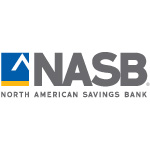While small business lending is up — another sign of life in the slowly recovering U.S. economy — the stagnant years preceding this recovery were difficult for small businesses. Banks were tight with loans and many companies found themselves shut out, unable to expand or replace aging equipment. During that time, many companies found success with a different type of loan.
The practice dates back to 2006 with the launch of the first peer-to-peer loan company, Prosper. Today, there are many more players. LendingClub is world’s largest peer-to-peer lending platform, with Prosper in second place.
Peer-to-peer lending is a fairly simple concept. It involves using the Internet to link borrowers and lenders for loans of relatively small amounts of money, usually up to about $35,000, at competitive rates and for short terms. Investors receive good rates of return, and small businesses and individuals get access to the money they require to take advantage of business opportunities.
It works like this: borrowers provide their credit information, the purpose of the loan, and the amount they require in an application process. Investors evaluate the company’s credit worthiness and, if they suspect a good bet, they provide some part of the amount required. For some small loans, the investment could be as little as $25. Once the amount requested is met, the loan is granted and then paid back just like a traditional loan. The interest rates are set by the peer-to-peer lending service.
The model is appealing because the interest rates are competitive with, and often lower than, traditional banks, and returns run between 5 and 15 percent — better than many investment opportunities available today. (This blogger, something of a peer-to-peer lending skeptic, prepared an interesting table of averages for peer-to-peer lending that is worth a look.)
The practice is still small, but growing. It’s expected that by 2016, peer-to-peer lenders in the U.S. alone will originate $20 billion in loans each year, according to Jason Jones, an organizer of the LendIt Conference and partner at New York-based Disruption Credit, an investment firm that specializes in online lending. Ron Suber, head of global institutional sales at Prosper, told IMT that the peer-to-peer model is popular with individuals looking to consolidate debt from high-interest vehicles.
“Since January, loan originations on Prosper have more than tripled from nine million to more than 30 million per month,” he said. “We are also seeing a sharp increase in borrowers as more people look to re-finance high interest rate credit card debt with a low-interest, fixed-rate, fixed term loan.”
While LendingTree offers loans to both individuals and small businesses, and Prosper offer loans only to individuals, other services such as Dealstruck focus exclusively on the small business market. Dealstruck brokers loans between $100,000 to $1 million for two- to five-year terms and with interest rates between 5 and 15 percent.
The benefits of peer-to-peer lending are obvious. Many of the services that offer this type of lending have no brick-and-mortar bank branches, which keeps operating costs and interest rates low. Borrowers and lenders do a lot of the administrative work online.
“It is a more direct funding process between the investors and the borrowers,” Lending Club’s CEO Renaud Laplanche told NPR. “There’s no branch network. Everything happens online and it is really powered by technology and the Internet. And we use technology to lower cost.”
This isn’t to say it’s risk-free. In its earliest days, the default rate of peer-to-peer lending hovered at about 17 percent — a figure that could give an investor second thoughts. Today, companies like LeandingClub use algorithms to screen borrowers for risk based on a number of factors such as credit, income, and industry averages. The algorithm weeds out about 90 percent of prospective borrowers. As a result, default rates have fallen to between 2 and 10 percent.
Peer-to-peer loans aren’t government guaranteed, so it’s possible that their penetration will be limited. That said, however, the practice is attracting big names. Earlier this year, Google invested $125 million in Lending Club, which last year facilitated about $800 million in loans and says it’s planning to loan about $2 billion this year. The company is likely to attract bigger investors and greater confidence thanks to Eaglewood Capital, which provides the securitization for Lending Club’s loans.
The New York Times notes that this securitization may be a crucial development for peer-to-peer lending because it might allow a wider array of investors to buy such loans. Many companies’ internal regulations might prohibit them from involvement in peer-to-peer loans without securitization.
Suber told IMT that it’s about maintaining balance.
“Our goal in underwriting is to keep the marketplace in balance – we want to provide value to both borrowers and lenders,” he said. “The flexibility of our credit model allows us to systematically adjust rates over time to keep this balance. We also price risk at an individual level based on individual credit attributes, providing borrowers a custom rate to meet their needs.”
Smart lenders have been able to greatly reduce risk by spreading out loans across a number of investors, attaining the right mix of high-risk, high-reward loans with more conservative loans that balance out the risk. And by lending only to companies and individuals with very good credit, the peer-to-peer model can rival many other types of investing.




